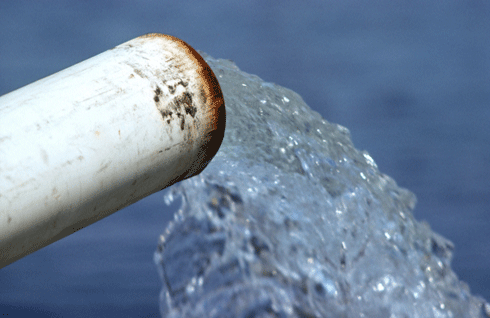
|
Published: 22 May 2012
Groundwater pumping contributes to sea level rise
The groundwater we pump to the surface for irrigation, drinking water, and industrial uses, doesn’t just seep back into the ground — it also evaporates into the atmosphere, or runs off into waterways, eventually emptying into the world’s oceans. In fact, a new study calculates that by 2050, groundwater pumping will cause a global sea level rise of about 0.8 millimetres per year.

|
|
When water is pumped from underground it is released back into the Earth’s hydrological cycle, ultimately contributing to sea level rise. Credit:
scienceimage
|
‘Other than ice on land, excessive groundwater extractions are fast becoming the most important terrestrial water contribution to sea level rise,’ says Yoshihide Wada, with Utrecht University in the Netherlands and lead author of the study.
He adds that, in coming decades, groundwater contributions to sea level rise are expected to become as significant as those of melting glaciers and ice caps outside of Greenland and the Antarctic. His research team’s article has been published in Geophysical Research Letters .
The last report of the UN’s Intergovernmental Panel on Climate Change in 2007 addressed the effect on sea level rise of melting ice on land. But it didn’t quantify the future contribution from other terrestrial water sources, such as groundwater, reservoirs, wetlands and more, according to Dr Wada, because the report’s authors thought the estimates for those sources were too uncertain.
‘They assumed that the positive and negative contribution from the groundwater and the reservoirs would cancel out,’ he said. ‘We found that wasn’t the case. The contribution from the groundwater is going to increase further, and outweigh the negative contribution from reservoirs.’
His team’s study shows that between around 1970 and 1990, sea level rise caused by groundwater pumping was cancelled out as people built dams, trapping water in reservoirs so it wouldn’t empty into the sea. This balance began to disappear in the 1990s, as populations started pumping more groundwater and building fewer dams.
The researchers were able to estimate the impact of groundwater depletion since 1900 using data from individual countries on groundwater pumping, model simulations of groundwater recharge, and reconstructions of how water demand has changed over the years.
Using these rates, they calculated that about 204 cubic kilometres of groundwater globally had been pumped in 2000, most of which was used for irrigation. Much of this irrigation water, in turn, evaporates from plants, enters the atmosphere and falls back to earth as rain.
Taking into account the seepage of groundwater back into the aquifers, as well as evaporation and runoff, the team estimated that groundwater pumping resulted in a sea level rise of about 0.57 mm in 2000 — much greater than the 1900 annual sea level rise of 0.035 mm.
As well as looking at the contribution of groundwater pumping, the researchers also looked at other factors that influence the amount of water entering the oceans from land, including marsh drainage, forest clearing and new reservoirs. The calculations show that that by mid-century, the net effect of these factors will be an additional 0.05 mm per year of annual sea level rise, on top of the contribution from groundwater pumping alone.
If things continue as projected, Wada estimates that by 2050, the net cumulative effect of non-ice, land-based water sources and reservoirs — including groundwater pumping, marsh drainage, dams, and more — will have added 31 mm to sea level rise since 1900.
He noted that one way to decrease groundwater’s contribution to sea level rise is to improve water efficiency in agriculture — to grow more with less groundwater.
Source: EurekAlert



